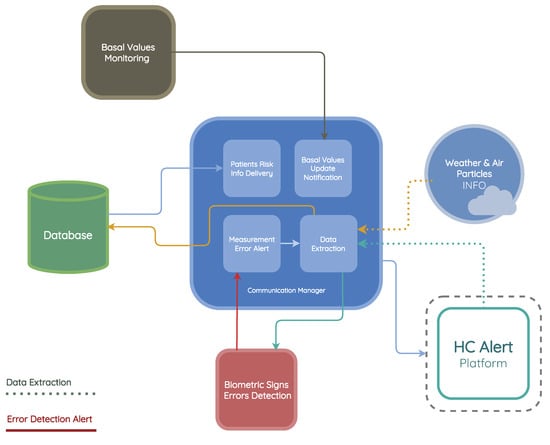Which Data Does Not Belong to the Oracle Db Monitor: Unveiling the Missing Metrics
The data that does not belong to the Oracle Db Monitor includes counters sorted by category (memory, call rates, cache ratio), SQL requests executed on Oracle Views, the vital signs related to database health, workload analysis, monitoring of top SQL statements, monitoring of long operations, monitoring of sessions, viewing critical issues, drilling down to individual targets, system tables and views in TimesTen, lack of data in performance charts and metric collection in Infrastructure Monitoring, and select metrics like memory usage and configuration in database monitoring. Oracle Database stores program code, sessions, locking details, and program execution requirements, along with data in its System Global Area (SGA).
Oracle Db Monitor is not specifically mentioned as a data source in the provided information.
Understanding Oracle Db Monitor Capabilities
Oracle Db Monitor is a powerful tool that provides invaluable insights into the performance and health of your Oracle database. By monitoring various metrics and gathering data, it allows you to identify potential issues, optimize performance, and ensure the smooth running of your database.
Overview Of Established Oracle Db Monitor Functions
Oracle Db Monitor offers a range of functions to help you gain a comprehensive understanding of your database’s performance. These functions include:
- Monitoring the Top SQL Statements
- Monitoring Long Operations
- Monitoring Sessions
Additionally, Oracle Db Monitor allows you to utilize tools like SQL Developer to monitor the current database sessions. This enables you to have a real-time view of the workload and performance of your database.
Common Data Metrics Gathered By Oracle Db Monitor
When it comes to monitoring your Oracle database, Oracle Db Monitor collects a wide range of data metrics. These metrics provide essential insights into the health and performance of your system. Some of the common data metrics gathered by Oracle Db Monitor include:
- Session Count: Displays the total number of active sessions in the database.
- Logons per Sec: Denotes the number of user logons per second during the sample period.
- Shared Pool Free %: Represents the percentage of free memory in the shared pool.
- Buffer Cache Hit Ratio: Measures the efficiency of the buffer cache by determining the ratio of logical reads to physical reads.
- Long Running Query: Identifies SQL queries that have a long execution time, allowing you to optimize them for better performance.
By analyzing these metrics, you can gain a deeper understanding of your database’s performance patterns, identify areas that require attention, and take proactive measures to enhance its overall efficiency.
Limiting Factors And Scope Of Monitoring
The monitoring capabilities of Oracle Db Monitor are extensive, enabling you to analyze and track various aspects of your database’s performance. However, it’s important to note that there may be certain limiting factors that could affect the scope of monitoring.
- Specific database configurations that restrict certain monitoring functionalities.
- Resource limitations, such as constrained CPU or memory, which may impact the scalability of monitoring operations.
- Security policies that limit the accessibility of certain data or restrict the use of specific monitoring features.
Considering these factors and understanding the scope of Oracle Db Monitor is crucial to ensure effective and accurate monitoring of your database’s performance.
In conclusion, Oracle Db Monitor is a robust tool that provides comprehensive monitoring capabilities for your Oracle database. By leveraging its functions and analyzing the gathered data metrics, you can optimize performance, identify and resolve issues, and ensure the smooth operation of your database.
Unveiling The Missing Metrics In Oracle Db Monitoring
Unveiling the Missing Metrics in Oracle Db Monitoring reveals the data that does not belong to the Oracle Db Monitor. This includes issues encountered with infrastructure monitoring, lack of data in performance charts, and metric collection. Monitoring selected metrics such as session count, logons per second, and buffer cache hit ratio is essential for strong database functioning.
Identifying Areas Where Oracle Db Monitor Falls Short
While Oracle Db Monitor is a powerful tool for monitoring database health and performance, there are certain areas where it may fall short in providing comprehensive metrics. Understanding these limitations is crucial for ensuring effective database monitoring and optimization.
Which Data Elements Are Typically Not Tracked
Oracle Db Monitor tracks a wide range of metrics for monitoring database performance. However, there are certain data elements that are typically not tracked by the monitor. These missing metrics can lead to gaps in understanding the true performance and health of the database.
Some of the data elements that are typically not tracked by Oracle Db Monitor include:
- Physical disk I/O metrics
- Network latency metrics
- Operating system-level metrics
- Application-specific metrics
- User-defined custom metrics
Without tracking these data elements, the monitor may not provide a complete picture of the factors influencing database performance.
The Impact Of Missing Metrics On Database Performance
The missing metrics in Oracle Db Monitor can have a significant impact on database performance analysis and optimization. Without comprehensive data, it becomes challenging to identify bottlenecks and areas of improvement in the database environment.
The absence of physical disk I/O metrics, for example, can make it difficult to pinpoint storage-related performance issues. Similarly, the lack of network latency metrics hinders the ability to diagnose network-related performance problems.
Operating system-level metrics are also crucial for understanding the overall health of the database server. Without these metrics, it becomes challenging to identify resource usage patterns, detect potential hardware issues, and optimize system configurations.
Application-specific metrics and user-defined custom metrics are essential for monitoring database-specific activities and tracking the performance of custom-built applications. Without these metrics, it becomes difficult to gain insights into application behavior and optimize performance accordingly.
Overall, the missing metrics in Oracle Db Monitor can limit the effectiveness of database monitoring and optimization efforts. It is important for database administrators to supplement the monitor’s capabilities with additional tools or manual monitoring to ensure comprehensive analysis and optimization of the database environment.
Alternative Approaches To Fill The Data Gaps
To fill the data gaps in Oracle Db Monitor, alternative approaches can be used such as monitoring the top SQL statements, monitoring long operations, and monitoring sessions. These approaches help analyze database health, identify issues, and monitor performance. They provide valuable insights for managing and optimizing the Oracle Database.
Manual Monitoring Techniques For Non-tracked Data
While Oracle Db Monitor provides comprehensive performance metrics for your database, it may not capture all the data you need. In such cases, manual monitoring techniques can help fill the gaps and provide valuable insights. Some of these techniques include:
- Performing regular database health checks by analyzing system logs and error files.
- Monitoring disk usage and storage capacity to ensure efficient storage management.
- Tracking network latency and bandwidth utilization to identify network-related performance issues.
- Creating custom scripts or queries to gather additional data points specific to your database environment.
Third-party Tools That Complement Oracle Db Monitor
In addition to manual techniques, there are various third-party tools available that can complement the monitoring capabilities of Oracle Db Monitor. These tools offer enhanced functionality and features to help you gather and analyze data that may not be captured by the native Oracle Db Monitor. Some popular third-party tools include:
| Tool Name | Features |
|---|---|
| Tool 1 | – Advanced performance monitoring – Real-time alerts and notifications – Customizable dashboards and reports |
| Tool 2 | – Deep database diagnostics – Query optimization – Capacity planning |
| Tool 3 | – Automation of routine database tasks – Security and compliance monitoring – Predictive analytics |
Integration Of Additional Monitoring Strategies
To ensure comprehensive monitoring coverage, it is recommended to integrate additional monitoring strategies alongside Oracle Db Monitor. These strategies can help bridge the data gaps and provide a holistic view of your database’s performance. Consider implementing the following:
- Application-level monitoring: Monitor the performance of key application components interacting with the database.
- Infrastructure monitoring: Track the health and performance of underlying hardware, network devices, and virtualization platforms.
- User experience monitoring: Measure the response time and availability of applications accessed by end-users.
- Log file analysis: Analyze application and database logs to identify errors, warnings, and performance bottlenecks.
By integrating these additional monitoring strategies, you can gain a comprehensive understanding of your database’s performance and address any potential issues before they impact your business operations.

Credit: www.sec.gov
Critical Unmonitored Metrics And Their Importance
Monitoring the Oracle database involves tracking critical metrics such as session count, logons per second, shared pool free percentage, buffer cache hit ratio, and long-running queries. This helps ensure strong database functioning, optimal performance, and efficient operation. Oracle stores various data like program code, sessions, locking details, and program execution requirements in memory for effective database management.
Deep Dive Into Specific Metrics Not Covered By Oracle Db Monitor
While the Oracle Db Monitor provides valuable insights into the performance of your database, there are certain critical metrics that it does not cover. These unmonitored metrics can have a significant impact on the overall health and efficiency of your system. It is crucial to understand these metrics and their importance in order to ensure optimal database performance.
How These Metrics Affect Overall System Health And Efficiency
Unmonitored metrics can have a direct impact on the overall health and efficiency of your database system. By not monitoring these critical metrics, you may not have a complete understanding of the underlying issues that can affect your system’s performance. These unmonitored metrics can include factors such as memory usage, configuration settings, connection information, and more.
For example, if the shared pool free percentage is not monitored, you may not be aware of any memory allocation issues that could impact the performance of your database. Similarly, the buffer cache hit ratio is a key metric that determines how efficiently data is being accessed from the cache. Without monitoring this metric, you may not be able to identify any bottlenecks or inefficiencies in your cache utilization.
Another important metric that is often overlooked is monitoring long-running queries. These queries can significantly impact the overall system performance, as they consume a large amount of system resources and can cause contention issues. By identifying and addressing these long-running queries, you can improve query response times, reduce resource consumption, and enhance overall system efficiency.
Strategies For Addressing The Lack Of Critical Data
Although the Oracle Db Monitor may not cover all the critical metrics, there are strategies you can implement to ensure that you have access to the necessary data for optimal performance monitoring.
One approach is to use custom scripts or queries to collect and analyze the specific metrics that are not covered by the Oracle Db Monitor. These scripts can be scheduled to run at regular intervals, providing you with valuable insights into the unmonitored metrics. Additionally, you can consider leveraging third-party monitoring tools that offer more comprehensive coverage of key performance metrics.
Another strategy is to utilize Oracle Enterprise Manager Database Control, which provides additional monitoring capabilities and allows you to customize the metrics you want to track. By leveraging these tools, you can bridge the gap in monitoring and ensure that you have access to all the critical data needed to optimize your database performance.
Maximizing Database Performance With Complete Data
The Oracle Db Monitor does not belong to the data related to memory, call rates, cache ratio, and other performance metrics. It focuses on monitoring and analyzing database health, identifying potential issues, and tracking top SQL statements, long operations, and sessions.
With Oracle Enterprise Manager Database Control, you can monitor, diagnose, tune, and test changes to the Oracle Database.
Utilizing A Holistic Approach To Database Monitoring
In order to maximize database performance, it is crucial to utilize a holistic approach to database monitoring. While the Oracle Db Monitor provides valuable metrics related to database health, it may not capture all the necessary data for a comprehensive analysis of performance. By combining the Oracle Db Monitor with additional tracking methods, you can gain a more complete picture of your database’s performance and identify any hidden issues that may affect its efficiency.
Balancing Oracle Db Monitor With Additional Tracking Methods
The Oracle Db Monitor focuses on monitoring vital signs and metrics related to database health, workload analysis, and issue identification. However, there are certain data points that may not be covered by the Oracle Db Monitor alone. It is important to balance the use of the Oracle Db Monitor with additional tracking methods to ensure no crucial data is overlooked.
By incorporating other monitoring tools or leveraging SQL Developer to monitor current database sessions, you can gather additional data on top SQL statements, long operations, and sessions. This comprehensive approach allows you to identify and address any performance bottlenecks or inefficient queries that may impact your database’s overall performance.
Incremental Benefits Of Monitoring The Previously Uncovered Metrics
Monitoring previously uncovered metrics brings incremental benefits to your database performance analysis. By expanding your monitoring scope beyond what the Oracle Db Monitor provides, you can identify additional areas for optimization and gain valuable insights to enhance your database’s overall performance.
Some of the key performance metrics to consider monitoring include:
- Session Count: Total number of sessions.
- Logons per Sec: Number of user logons per second during the sample period.
- Shared Pool Free %: Percentage of free space in the shared pool.
- Buffer Cache Hit Ratio: Ratio of buffer cache hits to total requests.
- Long Running Query: Identification of queries with extended execution times.
By monitoring these metrics and ensuring a comprehensive data collection approach, you can optimize your database’s performance and proactively address any potential issues before they become critical.
Remember, a holistic approach to database monitoring, balanced with additional tracking methods, allows you to leverage complete data, leading to enhanced database performance and improved overall efficiency.
Frequently Asked Questions Of Which Data Does Not Belong To The Oracle Db Monitor
What To Monitor In Oracle Database?
Monitor session count, logons per second, shared pool free percentage, buffer cache hit ratio, and long running queries in Oracle Database.
What Should Be Monitored In A Database?
To ensure optimal performance, databases should be monitored for metrics such as session count, logons per second, shared pool free percentage, buffer cache hit ratio, and long running queries. Monitoring these metrics helps teams maintain database health and make informed decisions based on real-time data.
What Comes Under Oracle Database?
Oracle Database includes features such as session monitoring, logons per second, shared pool free percentage, buffer cache hit ratio, and monitoring long-running queries. It also includes memory information, program code, sessions, locking details, and program execution requirements. Oracle Autonomous Database uses machine learning for automation and offers higher performance, reliability, security, and operational efficiency.
What Data Does Oracle Store?
Oracle Database stores in memory information such as program code, sessions, locking details, and program execution requirements, along with data. It organizes this information into four areas: System global area (SGA), Program global area (PGA), Data Dictionary, and Redo Log Files.
Conclusion
To effectively monitor and manage an Oracle DB, it is crucial to know which data does not belong to the Oracle DB Monitor. The Oracle DB Monitor primarily focuses on monitoring metrics related to database health, such as memory, call rates, cache ratio, and more.
It also analyzes the workload running against the database and identifies any issues automatically. Additionally, it allows you to monitor critical issues, performance, and individual targets from the Oracle Database Appliance home page. Monitoring databases using Oracle tools like SQL Developer and Oracle Enterprise Manager Database Control can provide valuable insights and help with performance tuning.
By monitoring selected metrics like session count, logons per sec, shared pool free %, buffer cache hit ratio, and long-running queries, teams can ensure strong database functioning. Overall, effective monitoring and management of an Oracle DB can significantly enhance performance, reliability, and operational efficiency.






